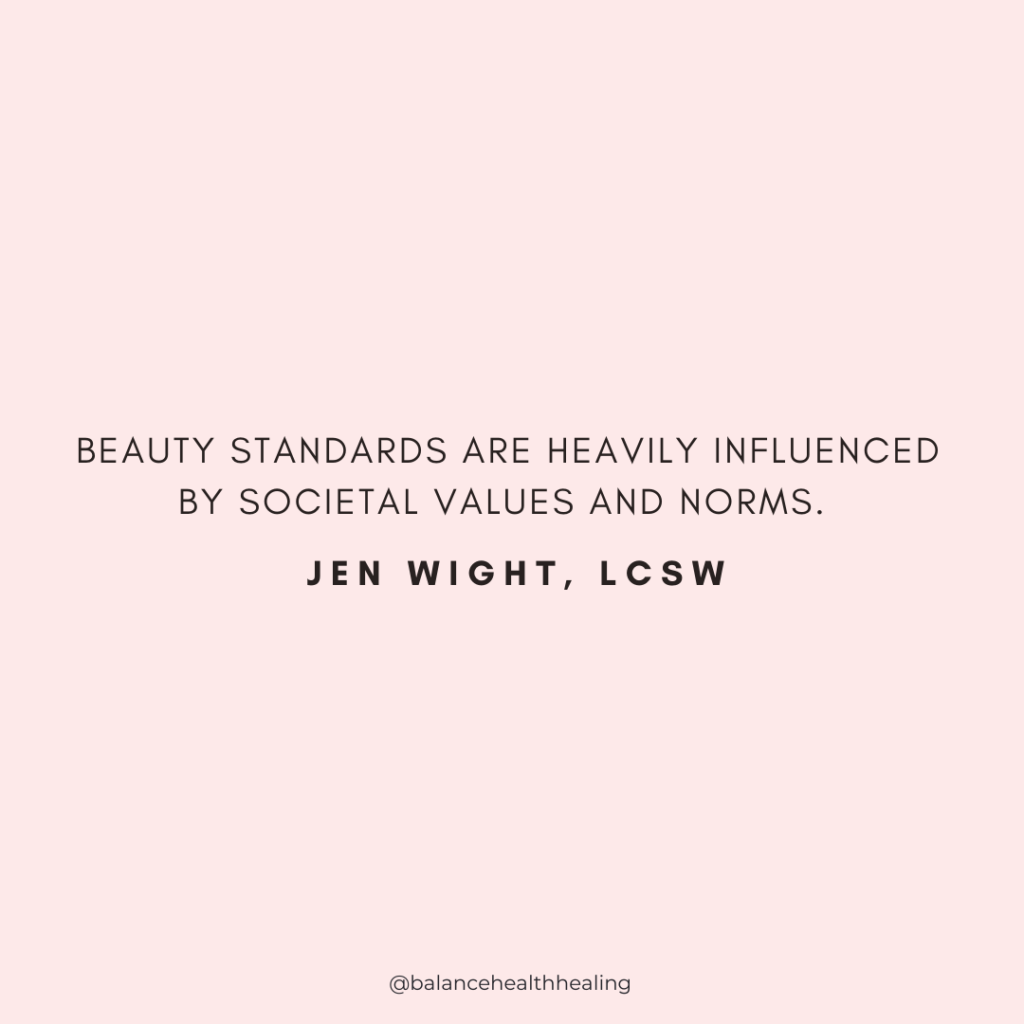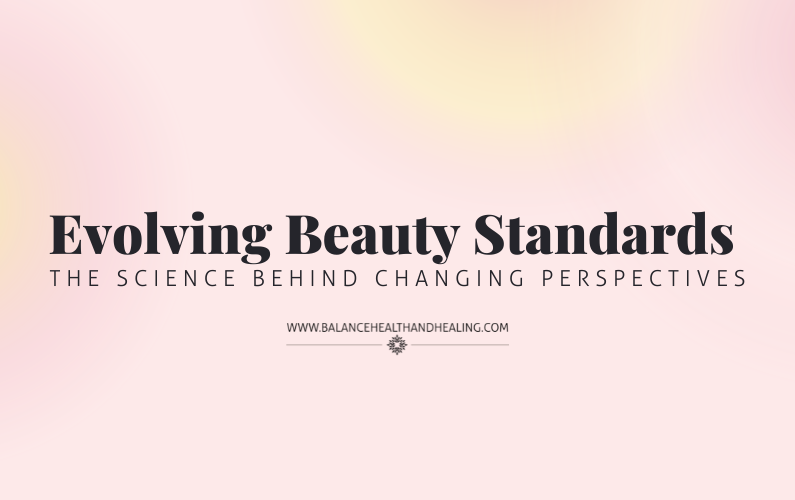Beauty standards have always been subject to influence by cultural, societal, and individual factors. Throughout history, there has been a noticeable shift in the way beauty is perceived and appreciated. You may be familiar with social media videos showing hair, makeup, or clothing trends through the decades and note the changing- and sometimes comical- differences the standard of “beauty” has brought to women. Why does this matter? In a world with an ever-changing bullseye, women find themselves exhausted trying to keep up. Unchecked, this can wreak havoc on your physical and emotional health. Let’s take a deeper dive and explore the changing beauty standards and the factors contributing to this transformation. 
Societal Influences:
Beauty standards are heavily influenced by societal values and norms. Historically, these standards have often been based on a narrow range (often white, European influenced) physical attributes, perpetuating unrealistic ideals. However, increased awareness and cultural shifts have given rise to a more inclusive perspective on beauty. This shift is driven by social movements, like body positivity, inclusivity, feminism, and equality.
Media:
The media plays a significant role in shaping beauty standards. Traditionally, mainstream media has promoted a homogeneous view of beauty, featuring predominantly slim, young, and white individuals. However, as media platforms diversify, there is a growing demand for representation of different body types, ethnicities, ages, and abilities. Exposure to diverse representations can positively impact self-esteem and body image.
Cultural Variations: 
Beauty standards vary across cultures, highlighting the subjective nature of beauty. In some cultures, curvier body types are celebrated, while in others, a slender physique is favored. Understanding cultural variations and appreciating diverse aesthetic preferences can help challenge the notion of a singular ideal and foster acceptance of different beauty standards.
Beauty standards are not merely external forces at work- they also can be internalized by individuals. The concept of “social comparison” explains how people compare themselves to others, often leading to negative self-perception when they fall short of societal beauty standards.
By understanding the underpinnings of changing beauty standards, you can become aware of how you are influenced and impacted by them. When you begin to take note of that, you can then take charge and set intentions around the way you want to interact with these ideas. It allows you to embrace inclusivity, challenge unrealistic ideals, and celebrate diverse forms of beauty. Recognizing the role of ever-changing beauty standards allows us to move toward a more inclusive and empowering notion of beauty, one that values individuality and authenticity.

